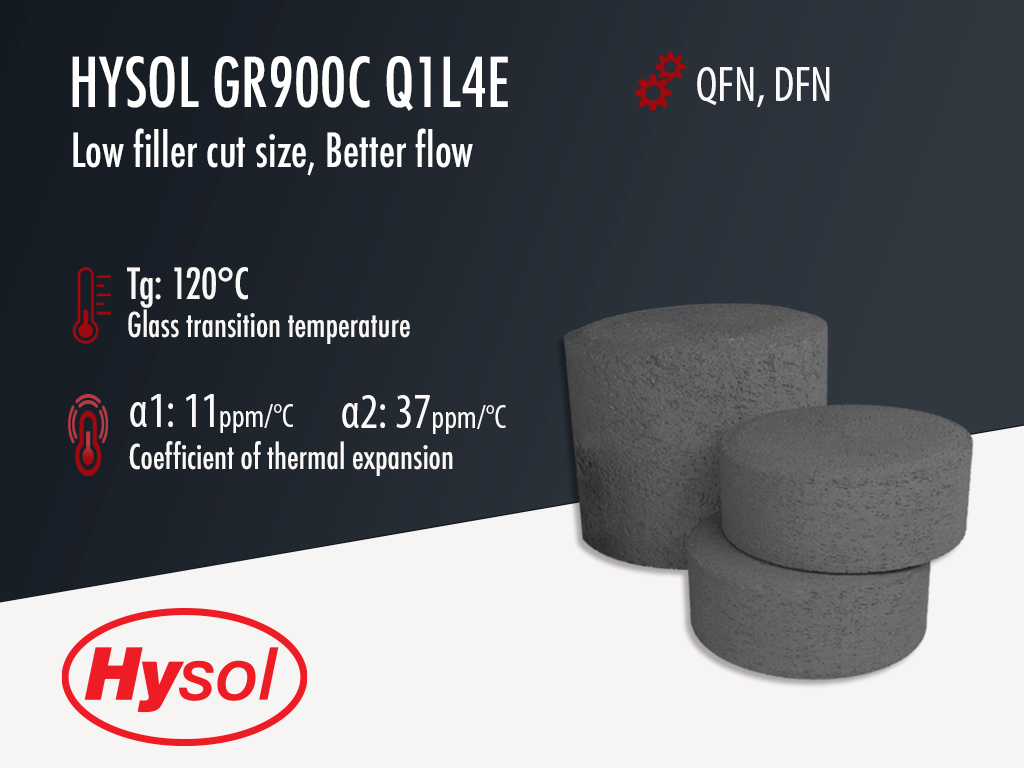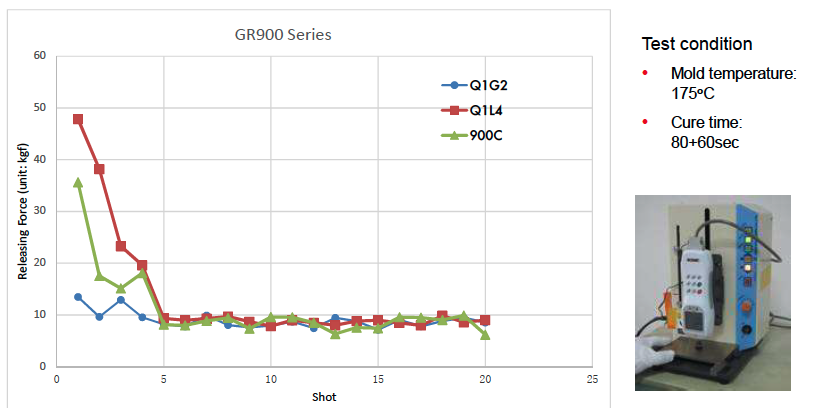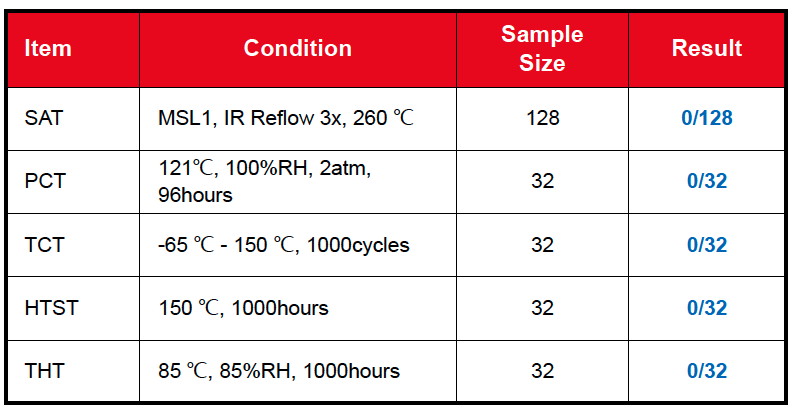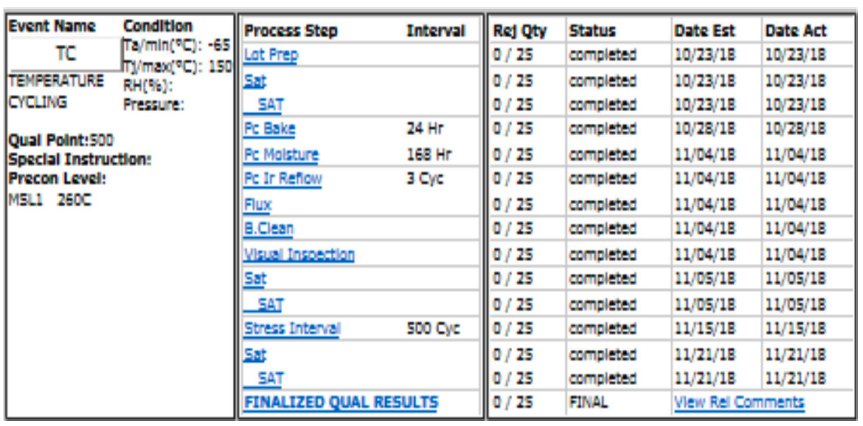Hysol GR900C Q1L4E | Black Epoxy Mold Compound
- Low filler cut size
- MSL1 260°C Capable EMC
- Compatible with Copper Wire
Product Description
Hysol GR900C Q1L4E is a low filler cut version of Q1L4. Filler cut size is 53um instead of 75um so it flows much better. This product was initially destined to be an E version of GR900 Q1L4 but it ended up having it's own product code as GR900C. Q1L4E is added for completion and to avoid misunderstandings. Don't ask. It is a black semiconductor-grade epoxy molding compound designed for the encapsulation and protection of quad-flat no-leads (QFN) and dual-flat no-leads (DFN).
Hysol GR900C Q1L4E is a spherical silica filled (86.5%) high end epoxy, typically used for QFN and DFN packages. It is mostly destined for larger package sizes between 5x5 and 7x7 QFN. This product is formulated to have a very low internal stress to reduce warpage, as well as low moisture absorption to increase MSL performance to MSL 1 @260°C with 3x reflow.
Hysol GR900C Q1L4E is an environmentally "green" halogen free product, meaning that it doesn't contain any bromine, antimony or phosphorus flame retardants. Previous MG-series EMC dominated the space for power semiconductors but used halogen-containing flame retardants. This next generation epoxy mold compound replaces these older generation products. To add to that, this material is designed to achieve JEDEC Level 1 requirements at 260°C reflow temperature on preplated or NiPdAu leadframes. It meets UL 94 V-0 Flammability at 1/8 inch (3.18mm) thickness.
Technical Specifications
| General Properties | |
| Color Color The color | Black |
| Filler Content | 86.5 % |
| Specific Gravity Specific Gravity Specific gravity (SG) is the ratio of the density of a substance to the density of a reference substance; equivalently, it is the ratio of the mass of a substance to the mass of a reference substance for the same given volume. For liquids, the reference substance is almost always water (1), while for gases, it is air (1.18) at room temperature. Specific gravity is unitless. | 1.98 |
| Thermal Properties | |
| Glass Transition Temperature (Tg) Glass Transition Temperature (Tg) The glass transition temperature for organic adhesives is a temperature region where the polymers change from glassy and brittle to soft and rubbery. Increasing the temperature further continues the softening process as the viscosity drops too. Temperatures between the glass transition temperature and below the decomposition point of the adhesive are the best region for bonding. The glass-transition temperature Tg of a material characterizes the range of temperatures over which this glass transition occurs. | 120 °C |
| Mechanical Properties | |
| Molded Shrinkage | 0.3 % |
| Physical Properties | |
| Spiral Flow @ 175°C | 132 cm |
| Curing Conditions | |
| Transfer Pressure | 40 - 85 kg/cm2 |
| Transfer Time | 7 - 15 s |






